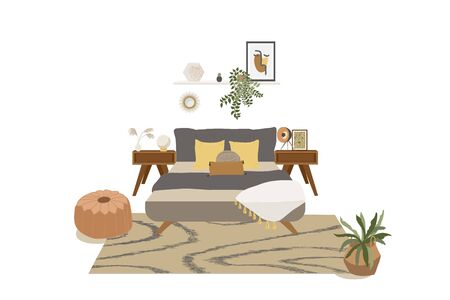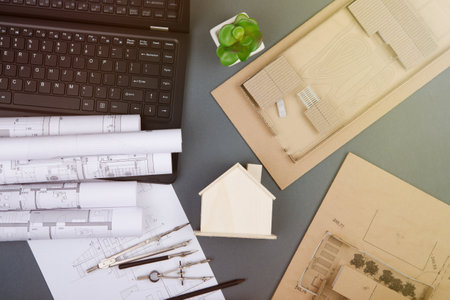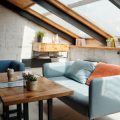Understanding the Purpose of the Initial Consultation
The initial consultation with a UK interior design professional sets the tone for your entire design journey. This first meeting is more than just a formality; it is a crucial opportunity to articulate your vision, understand the designer’s approach, and establish mutual expectations. In the British context, this encounter is also shaped by distinctive cultural nuances. Expect a blend of understated professionalism, polite curiosity, and an emphasis on respect for your home and lifestyle. British designers often value subtlety and discretion, preferring to listen carefully before offering advice. Punctuality and clear communication are held in high regard, reflecting a wider national ethos of courtesy and reliability. During this session, you can anticipate a balanced exchange where both parties ask questions—designers may inquire about your routines, aesthetic preferences, and budget parameters while remaining tactful and non-intrusive. This meeting is not about making snap decisions but rather about laying a foundation of trust and clarity. By appreciating these elements of British professionalism and etiquette, you will be better prepared to engage meaningfully and set the stage for a successful collaboration.
Preparing Your Ideas and Requirements
Making the most of your initial consultation with a UK interior design professional begins well before you step into their studio or welcome them into your home. Preparation is key, and this starts with gathering your inspirations, clarifying your needs, and ensuring you can communicate your vision using references that resonate within the British design landscape.
Collating Inspiration Effectively
Start by curating a collection of images, magazine clippings, and online boards that genuinely reflect what you are drawn to. British interiors often blend heritage elements—such as Victorian cornices or Arts & Crafts details—with contemporary touches. Utilise UK-based platforms like House & Garden or Livingetc, which showcase a range of styles from classic Georgian elegance to modern urban chic.
Creating Moodboards
Moodboards are an invaluable tool for visual communication. Whether digital or physical, they allow you to bring together colour palettes, textures, and furniture silhouettes. Consider referencing local materials like Cotswold stone, Welsh slate, or Scottish tweed to root your moodboard in the British context. Here’s a simple way to structure your moodboard preparation:
| Moodboard Element | British Reference Example | Your Preference |
|---|---|---|
| Colour Palette | Farrow & Ball heritage shades (e.g., Hague Blue) | |
| Material/Texture | Cotswold limestone, Harris Tweed upholstery | |
| Furniture Style | Mid-century Ercol chairs, Chesterfield sofa | |
| Pattern/Detailing | Morris & Co. wallpaper, parquet flooring |
Articulating Your Vision Using British References
When discussing your aspirations with a designer, referencing familiar UK styles and brands can streamline understanding. For example, expressing admiration for “Soho House-style cosiness” or “the lightness of a Scandi-inspired Hackney flat” gives clear cues rooted in a shared cultural context. Don’t hesitate to mention particular high street or boutique shops (like Heal’s or The Conran Shop) whose aesthetics align with yours.
Key Points for Effective Communication:
- Be specific: Instead of saying “I want something modern,” try “I love the clean lines of mid-century British design.”
- Mention lifestyle needs: Think about practicalities—a boot room for muddy wellies if you’re in the countryside, or clever storage if space is tight in a London terrace.
- Prioritise: Identify must-haves versus nice-to-haves; it’s helpful for designers working within typical UK property limitations.
A thoughtfully prepared brief not only saves time but also helps establish a creative partnership grounded in shared cultural references. This approach ensures your designer fully understands both the look you wish to achieve and how it will work within the unique context of British homes.

3. Establishing Your Budget and Priorities
Open and honest discussions about your budget are fundamental to a successful initial consultation with UK interior design professionals. In Britain, where property values and renovation costs can vary widely between regions—think of the stark contrast between central London and a rural Cotswold village—transparency around financial expectations ensures that both designer and client are aligned from the outset. British cost structures often incorporate not only materials and labour but also factors like VAT, planning permissions, and potential heritage considerations, all of which can significantly affect the overall investment required.
It is considered good etiquette in the UK to be upfront about what you are comfortable spending; this candour enables your designer to tailor proposals realistically rather than offering unfeasible suggestions or inadvertently overspending your resources. Prioritising needs is equally crucial—whether you’re seeking to maximise space in a Victorian terrace or introduce sustainable materials into a new-build flat. Start by distinguishing between must-haves (such as improved insulation or updated lighting) and nice-to-haves (like bespoke joinery or imported fixtures). Many British designers will help you navigate these decisions by offering phased approaches or alternative solutions that respect your financial parameters while still delivering on style and function.
By engaging in transparent budget conversations and clearly outlining your priorities during the initial meeting, you lay the groundwork for a collaborative relationship built on trust—a value highly prized in the UK’s professional landscape. This approach also helps avoid misunderstandings further down the line, ensuring your interior design journey is as seamless—and enjoyable—as possible.
4. Exploring Local and Sustainable Design Options
During your initial consultation with a UK interior designer, it’s increasingly common—and culturally relevant—to discuss the use of local and sustainable design elements. British designers are at the forefront of incorporating eco-conscious practices, blending heritage craftsmanship with modern sustainability. This not only reduces environmental impact but also celebrates Britain’s rich tradition of artisanal skills, from Cotswolds stone to Yorkshire wool.
Understanding the Appeal of Local Materials
UK designers often favour materials that support local industries and minimise carbon footprints. Examples include reclaimed timber from historic buildings, Welsh slate, Scottish tweed, and ceramics from Stoke-on-Trent. By choosing such materials, you help preserve regional character while promoting responsible sourcing.
Common Locally-Sourced Materials in UK Interiors
| Material | Region/Origin | Typical Use in Interiors |
|---|---|---|
| Cotswold Stone | Gloucestershire & Oxfordshire | Flooring, fireplaces, feature walls |
| Welsh Slate | North Wales | Kitchen worktops, hearths, bathroom tiles |
| Scottish Tweed | The Scottish Highlands & Islands | Upholstery, cushions, window treatments |
| Reclaimed Timber | Nationwide (from old barns/historic buildings) | Flooring, beams, bespoke furniture |
| Stoke-on-Trent Ceramics | Staffordshire | Tiling, decorative accessories, tableware |
Sustainable Practices in the UK Interior Design Scene
Sustainability is a growing priority for both designers and clients across the UK. Many professionals are committed to low-VOC paints, upcycled furnishings, energy-efficient lighting, and careful waste management. Designers may also recommend suppliers with strong green credentials or suggest layouts that maximise natural light and insulation—essential for British homes facing cold winters.
How to Express Your Interest in Sustainability During Consultation
- Be direct: Clearly state your interest in local materials or eco-friendly solutions early in the conversation.
- Ask questions: Inquire about the designer’s previous experience with sustainable projects or specific British-made products they recommend.
- Mention values: Share your motivation—be it supporting local craftsmen or reducing environmental impact—so the designer can tailor their proposals accordingly.
- Request examples: Ask to see case studies or material samples during your meeting to better understand possibilities.
- Discuss budget implications: Sustainable options can vary in cost; ask for transparent advice on balancing your priorities within your budget.
Tapping into the UK’s wealth of locally-sourced and sustainable design options not only gives your project a unique sense of place but also aligns your home with forward-thinking environmental standards—a true reflection of contemporary British values.
5. Clarifying Roles, Timelines, and Communication Styles
One of the most crucial aspects of a successful initial consultation with a UK interior design professional is establishing clarity around project roles, timelines, and communication preferences. The British approach to project management is often methodical and structured, with clear delineations of responsibility and a strong emphasis on keeping to agreed schedules. During your first meeting, it’s wise to ask directly about who will be your main point of contact—will it be the designer themselves or a dedicated project manager? Understanding this helps set expectations for decision-making and accountability.
When discussing timelines, remember that UK designers are typically conservative in their estimates, preferring to under-promise and over-deliver. It’s appropriate to ask for a detailed breakdown of key milestones, expected completion dates, and any dependencies that could impact the schedule—such as supplier lead times or planning permissions. Don’t hesitate to enquire about contingency plans if there are delays, as transparency here is both expected and appreciated in British business culture.
Communication etiquette also plays a significant role in fostering a smooth working relationship. In the UK, professionals value politeness, punctuality, and written records of agreements or changes. Clarify whether updates will be shared via email, scheduled calls, or face-to-face meetings, and agree how frequently you’d like progress reports. It’s also helpful to establish preferred hours for communication—many British professionals observe strict boundaries between work and personal time.
Finally, ensure you have a mutual understanding of deliverables at each stage: what will you receive after concept development? How will material samples or mood boards be presented? Should you expect digital renderings or physical models? By addressing these points early on—and recognising the particularities of British working styles—you’ll lay the groundwork for an efficient and enjoyable design journey.
6. Evaluating Chemistry and Professional Fit
In the UK, the relationship between client and interior designer is deeply rooted in a culture that values rapport, trust, and mutual understanding. This connection goes beyond mere professionalism; it’s about finding someone who not only has the technical skills but also resonates with your personal taste and ethos. During initial consultations, pay close attention to how naturally conversation flows—do you feel at ease discussing your ideas, or is there a sense of formality that makes communication awkward?
The British Approach to Rapport
British clients and designers often favour subtlety and discretion. Small talk about lifestyle, local communities, or shared interests isn’t just polite—it’s an essential part of building trust. Don’t rush these exchanges; they help reveal whether your designer appreciates your background and aspirations, which are crucial for a successful project outcome.
Identifying Shared Values
Ask open-ended questions about the designer’s approach to sustainability, historical preservation, or use of local artisans—topics that often hold particular weight in UK interiors. Listen for references to British design heritage or regional influences; these cues signal both cultural awareness and sensitivity to your environment.
Assessing Style Compatibility
Review the designer’s portfolio with an eye for recurring themes: Are their projects consistently minimalist, or do they celebrate eclectic British charm? Does their work reflect the understated elegance often prized in UK homes, or do they lean towards bold experimentation? Genuine compatibility is about more than admiring their past projects—it’s about feeling confident that they can translate your vision into something authentically ‘you’.
Ultimately, making the most of your initial consultation means embracing the distinctly British way of blending professionalism with personal rapport. By evaluating both chemistry and alignment in values and style, you lay the foundation for a collaborative partnership that brings your dream space to life in a manner true to UK sensibilities.


